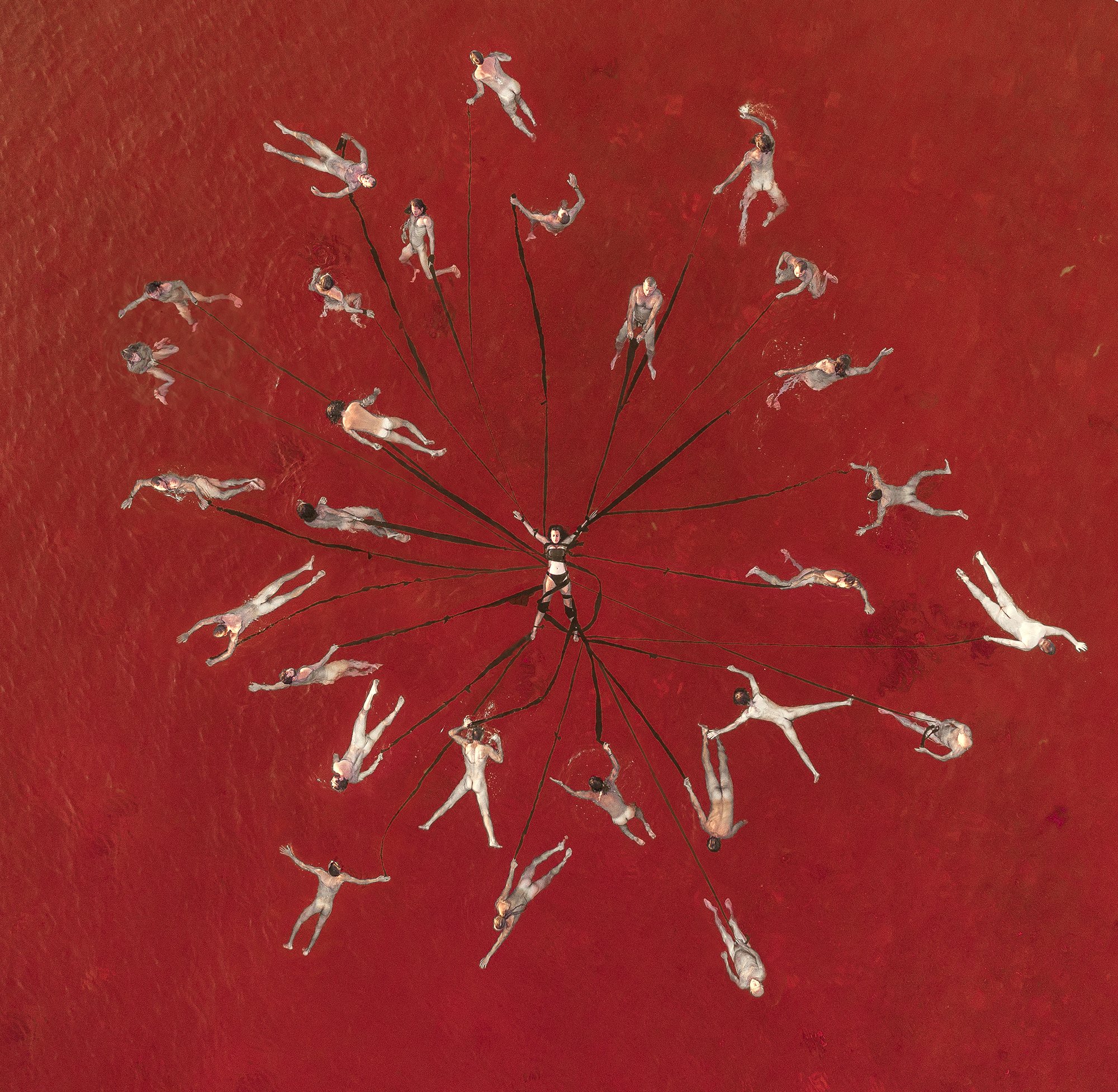The Red Sea Act
Some works of art exist beyond the frame, beyond the captured image. They pull you in, press into your chest, demand something of you. The Red Sea Act was one of those works—a creation that was both a wound and a ritual of healing.
It started as a vision, unsettling in its clarity. A woman bound by black ropes, floating in open water, tethered to a circle of men. The image carried weight before it even existed. It was difficult to describe, even harder to ask people to embody. But the act it responded to was far heavier. The invisible ties that bind us—between men and women, between history and now—are not always ones we choose. And yet, here we were, stepping into the water together, choosing to face it.
This was a process, an unspoken agreement to hold and be held. Slowly, with caution and care, we built a space where vulnerability could meet strength. The moment the first light touched the surface and everyone stepped into the sea, something shifted. What had been an idea became a ritual. We arranged ourselves in the water, the weight of the concept settling in. And then, stillness.
Afterward, we sat together, quiet, the salt still drying on our skin. A song was sung, voices steadying the air between us. And then, we spoke. What was shared in that circle remains in that circle, but I carry it with me. It was a moment of transformation, for all of us. To create art in this way—to craft something that doesn’t just illustrate pain but moves it, shifts it, ripples outward—is a privilege.
We are the waves. We are the ones who turn silence into a storm, into a sea that does not drown but carries. And somewhere within its depths, there is a way forward.










